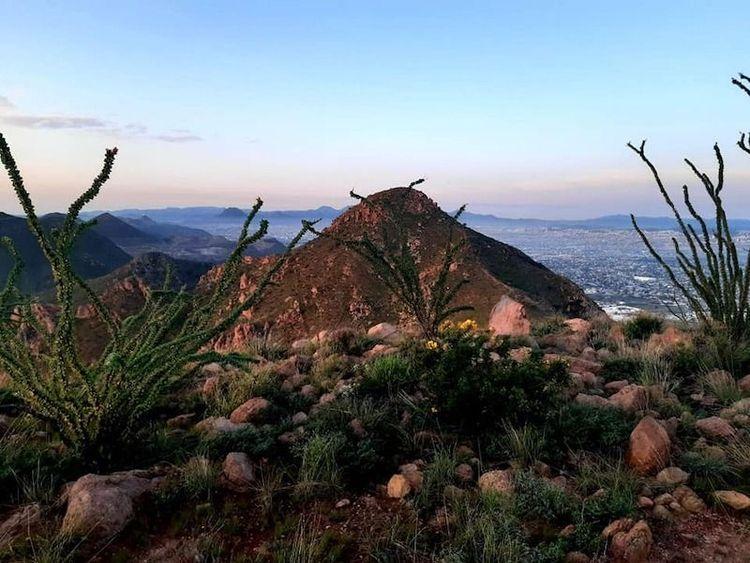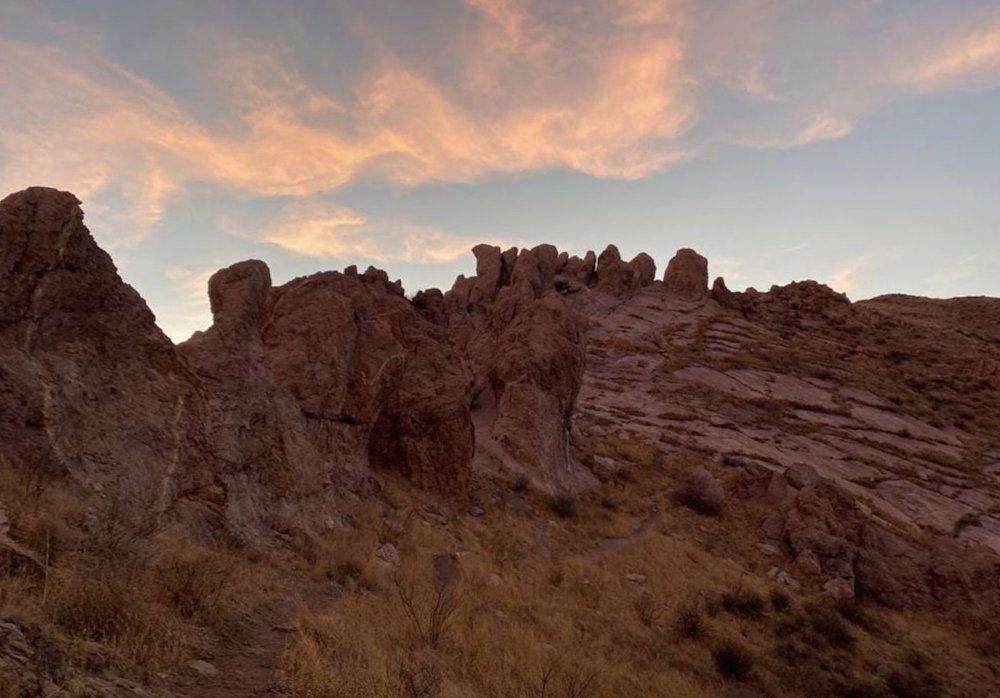The Sierra Nombre de Dios is a 2,000 kilometer-long mountain range that extends through the central area of Chihuahua. Since April 11, there has been a public consultation, promoted by citizens, to request their decree as a Protected Natural Area (ANP), in the Natural Monument category. A first step to protect water, health and the environment against mining activity.
“Is it important and urgent that the Sierra Nombre de Dios be declared a Natural Monument (Protected Natural Area)?” , cites the public consultation that will conclude on April 30 for the municipalities of Chihuahua, Aquiles Serdán, Aldama and Rosales, those encompassed by the mountain range.
Unlike other public consultations for the ANP decree, this one was not promoted by the Ministry of Environment and Natural Resources (Semarnat). The exercise was granted after a series of hearings requested by environmentalists, where the State Electoral Institute of Chihuahua (IEEC) is in charge of the organization.
“The Sierra Nombre de Dios is currently known for being the place where the mines of national companies are located, some of them the largest in the country and, therefore, among the most harmful,” said Luis Rivera, spokesman for Salvemos Los Cerros Chihuahua, the group behind the consultation.
As part of the process, they have organized forums, walks and rallies to motivate them to continue participating. If the consultation wins, it will allow us to request that Semarnat begin the official process for the ANP decree, otherwise, Salvemos Los Cerros warned that they will file a lawsuit with the Judiciary and the consultation will be a test.
“We decided that this is a good way to exert pressure because state authorities are interested in defending the private property of businessmen... we have already done (environmental) studies for the government and when they have them in their hands, they discard them...”, he added.
The last five years have also been one of mobilizations, mainly in the municipalities where the Sierra is located, as well as other places of environmental importance such as the Chuvíscar River, the Sacramento River and the Sierra Azul Mountains.
Rivera details that one of those responsible is Grupo Cementos de Chihuahua (GCC), a national company dedicated to the production of cement, concrete and aggregates through the extraction of materials in the Sierra Nombre de Dios.
According to documentation from local environmentalists, extractions cause the release of radon gas, which can affect endemic species in the region and the health of its inhabitants.
Causa Natura Journalism contacted GCC to discuss the allegations, but received no response.

View from the Sierra Nombre de Dios. Photo: Let's Save the Hills.
Mining companies, cancer and other effects
“We have much more to gain with the Sierra Madre de Dios as a Protected Natural Area, than by continuing to be used as an area of extraction and economic activity,” said David Hernández, a master of science and part of the Keyah initiative dedicated to environmental repair.
Hernández lives in the back of the mountain range, near the arid Picos de la Luna hill, in the municipality of Chihuahua. As a neighbor, he has been involved in environmental defense since he was in college, approximately 15 years ago.
“Since the 90s and the beginning of the 2000s, there has been research on the presence of uranium in these lands... there is evidence that these extraction activities are releasing large amounts of radon gas into the atmosphere, which affects the health of the community...”, Hernández explained.
Regarding the studies, one of the most relevant is “Lung cancer mortality and radon concentration in a chronically exposed neighborhood in Chihuahua, Mexico”, published in the science journal Hindawi in 2014.
This is a geospatial analysis from 2010 to 2012 that measured radon concentrations in different houses in the city of Chihuahua during the winter seasons, as well as the review of death certificates for lung cancer from 2004 to 2010.
“The city of Chihuahua is located close to Mexico's main uranium deposits. This situation, together with the igneous rock substrate in the region, makes the concentration of uranium in the soil a source of radon emanation,” the study points out.
Although the results do not indicate the mining activity of GCC, they do detail the relationship between lung cancer and exposure to radon released from uranium areas. The regions most at risk are the communities located around the Sierra Nombre de Dios.
“When extracting material for cement, very fine particles are released that travel to the lungs, cause a rupture in lung tissue and can cause mesothelioma (the most common form of lung cancer),” added David Hernández.
According to the “Cancer and Social Inequalities in Mexico Report 2020” by El Colegio de México, radon present in the soil is the second risk factor for this type of disease.
Added to this is the challenge of conserving the flora and fauna of the region, especially the endemic or threatened species in the center of Chihuahua.
“Personally, I had a conversation with GCC two years ago. An environmental remediation proposal was made, we talked to them about technologies for soil repair, a grassland regeneration plan. On the downside, the good thing is that this is not an activity that irrigates toxic waste through properties,” Hernández said.
However, the management plan was not followed up.
The sustainability reports, available on the official GCC website, only mention a strategy that began to be designed in 2018, mainly focused on compliance with laws and the reduction of carbon dioxide (CO2) emissions.

Area most exposed to radon in the conurbated area of the Sierra Nombre de Dios, Chihuahua. Source: Hindawi scientific journal.
Without hills, there is no water
With the motto “Without hills there is no water and without water there is no life”, the defense of places such as the Sierra Nombre de Dios has been promoted.
“90% of the water consumed in the municipality of Chihuahua comes from its aquifers and the Sierra Nombre de Dios is one of the providing lands. Not protecting a Sierra with this water filtration capacity is a crime,” said David Hernández.
Hernánez explained that in addition to mining, the deforestation of trees in the mountain range is a danger for a state like Chihuahua, which reports increasingly intense droughts every year.
“Continuing to deforest the Sierra Nombre de Dios is practically a death sentence for us, because it is the mountain range that traps some cloud cover that descends from the northwest, which generates a pressure system that holds back rain. Removing trees from the hills is saying goodbye to these clouds,” added the environmentalist.
On April 19, the Forum was held before the State Congress, as part of the activities during the public consultation. With this, the formation of the Northern Broad Environmental Front (FAAN) was announced.
FAAN has also been joined by groups from Ciudad Juárez, such as Defensa del Rio Bravo, the Ecosocial Front in Defense of Samalayuca “So that we don't mine the mine” and Defensa de la Sierra de Juárez.
The common goal is to continue to organize collectively against environmental threats across the state, as has happened in the Sierra Nombre de Dios.



Comentarios (0)